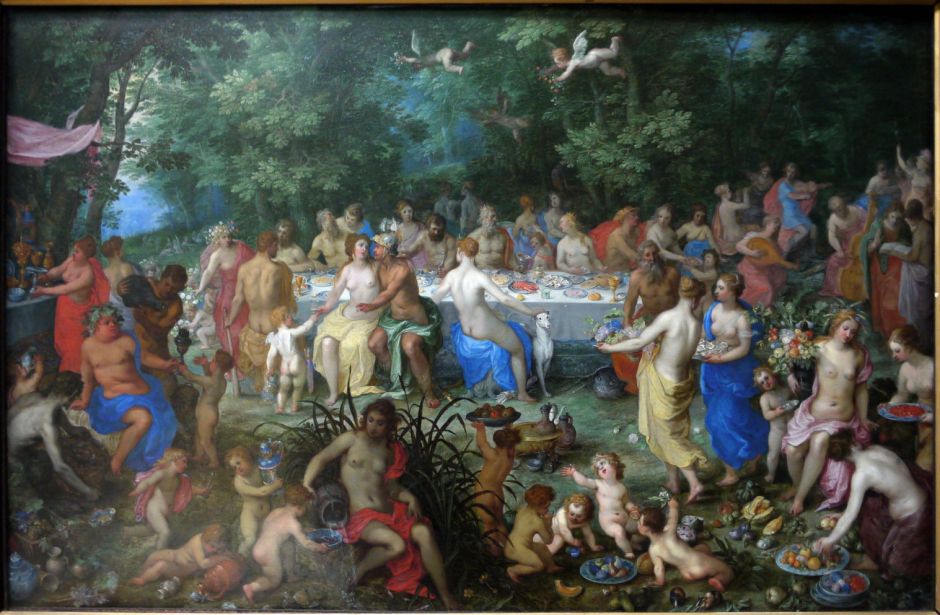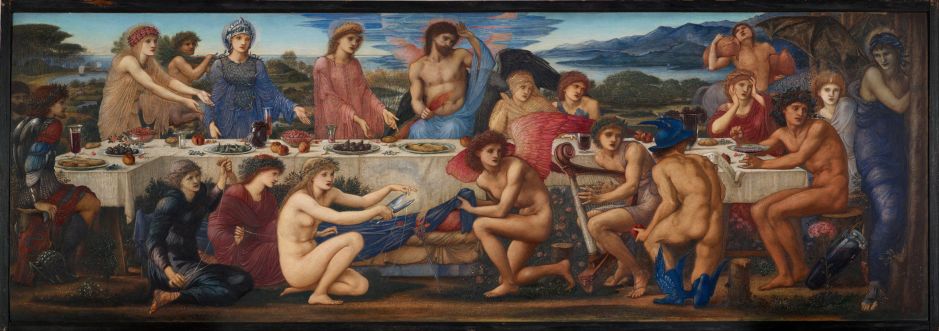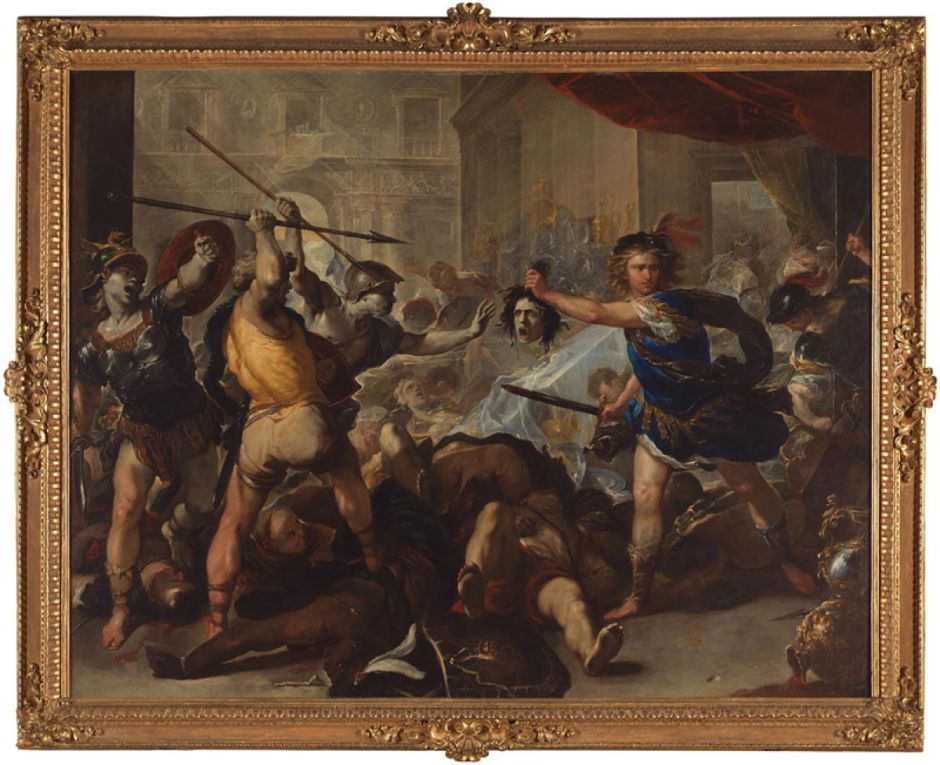Although no painting of a secular feast can compete in fame with those of the Last Supper, several drawn from classical myth have become well known. Of these, the wedding feast of Peleus and Thetis has been painted by several masters, and with its role in the epics of the Trojan War is the most significant.
This wedding feast was held on Mount Pelion, and attended by most of the gods. The happy couple were given many gifts by the gods, but Eris threw her golden apple ‘of discord’ into the middle of the goddesses, to be given as a reward to ‘the fairest’ in the beauty contest between three of them, that set up the cause of the war against Troy.

Joachim Wtewael’s undated painting of The Wedding of Peleus and Thetis is great fun, with its aerial band, and numerous glimpses of deities behaving badly. I think I can also spot Eris, about to sow her apple of discord into their midst: she’s in mid-air to the left of centre, the apple held out in her right hand.

Hendrick van Balen and Jan Brueghel the Elder combined their skills to paint The Wedding of Thetis and Peleus together in about 1630. Here it’s the innumerable putti who seem to be running riot, but there’s no sign of Eris or her golden apple, as far as I can see.

It’s the most modern version, painted by Edward Burne-Jones as The Feast of Peleus in 1872-81, that sticks most closely to the story. In a composition based on classical representations of the Last Supper, he brings Eris in at the far right, her golden apple still concealed. Every head has turned towards her, apart from that of the centaur behind her right wing. Even the three Fates, in the left foreground, have paused momentarily in their work.
Of the three great mythical weddings, the first in chronological order was that of Hippodame and Pirithous, which brought an end to the dominance of centaurs on earth, the Centauromachy. This was celebrated in prominent places: the subsequent battle of the Lapiths and Centaurs was shown in sculpture on the temple of Zeus at Olympia, and on the Parthenon at Athens.
When Pirithous married Hippodame, the couple invited centaurs to the feast. Unfortunately, passions of the centaur Eurytus became inflamed by drink and lust for the bride, and he carried off Hippodame by her hair. The other centaurs followed suit by each seizing a woman of their choice, turning the wedding feast into utter chaos, like a city being sacked.

Piero di Cosimo’s The Fight between Lapiths and Centaurs (1500-15) is my favourite among the earlier paintings of the ultimate wedding feast gone wrong. In the centre foreground, Hylonome embraces and kisses the dying Cyllarus, a huge arrow-like spear resting underneath them. Immediately behind them, on the large carpets laid out for the wedding feast, centaurs are still abducting women. All around are scenes of pitched and bloody battles, with eyes being gouged out, Lapiths and Centaurs wielding clubs and other weapons at one another. This was definitely a wedding to remember, if you survived it.

Peter Paul Rubens’ finished painting of The Rape of Hippodame (Lapiths and Centaurs) (1636-38) remains faithful to Rubens’ earlier oil sketch and its composition. Facial expressions, particularly that of the Lapith at the left bearing a sword, are particularly powerful.
A second wedding to be grateful you missed was that between the great hero Perseus and the princess whom he rescued from Cetus the sea monster. Andromeda’s parents were so delighted at their daughter’s rescue that she, who had already been promised in marriage to Phineus, was quickly married instead to Perseus. At the wedding feast, Phineus and his friends were understandably rather miffed, and a violent quarrel broke out between them and Perseus. As happens at the most memorable of weddings, this turned seriously nasty when weapons came out and bodies started to fall. The solution for Perseus was to brandish the head of Medusa and turn Phineus and his friends into cold statuary.

In Giordano’s Perseus Turning Phineus and his Followers to Stone from about 1683, the process of petrification is less obvious, but the carnage and mayhem are convincing.

Ricci’s Perseus Confronting Phineus with the Head of Medusa from about 1705-10 shows the final moments of the battle, as Phineus cowers next to two of his henchmen who have almost completed the process of changing into stone.
My final feast is more tranquil, and put no one in danger, a banquet thrown by Achelous, the river god, who invited Theseus and others to dine with him on the coast. Paintings of this feast enjoyed a brief period of popularity during the early part of the seventeenth century, then vanished.

Hendrick de Clerck’s The Banquet of Achelous was probably painted in about 1610. The four men are feasting, sat around a table rather than reclining in Roman style. The rock pergola which surrounds them is suitably decorated with shells, and a bevy of bare-breasted young women serves seafood and fruit.

Jan Brueghel the Younger and Hendrick van Balen combined talents to paint The Feast of Achelous slightly later, in about 1610-20. It follows a similar composition to de Clerck’s painting, but reversed, with the distant nymphs on the left.

At about the same time, around 1615, Peter Paul Rubens collaborated with Jan Brueghel the Elder (father of Jan Brueghel the Younger) in The Feast of Achelous. There are now nine men around the table, and the distant nymphs are nowhere to be seen.

